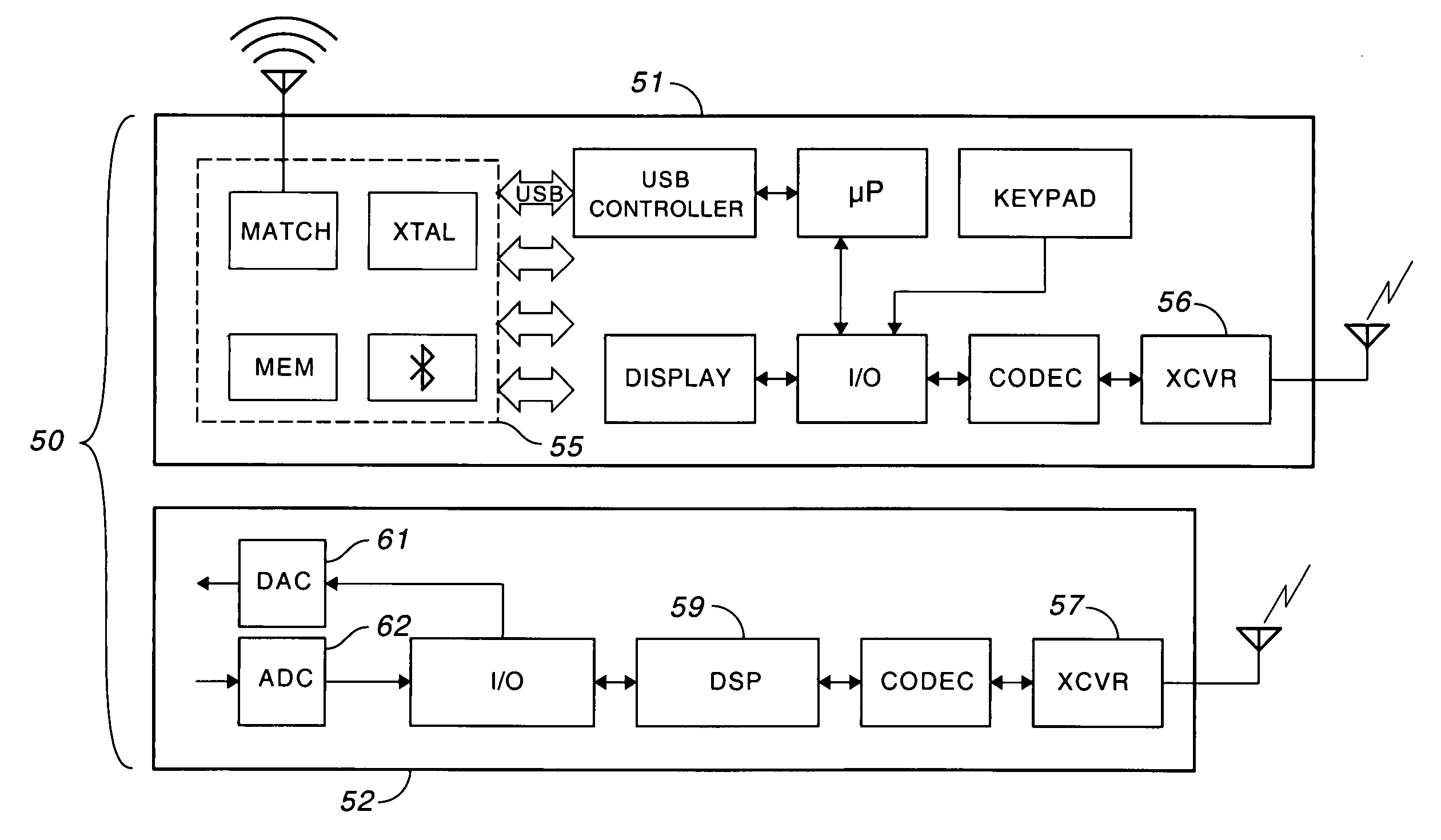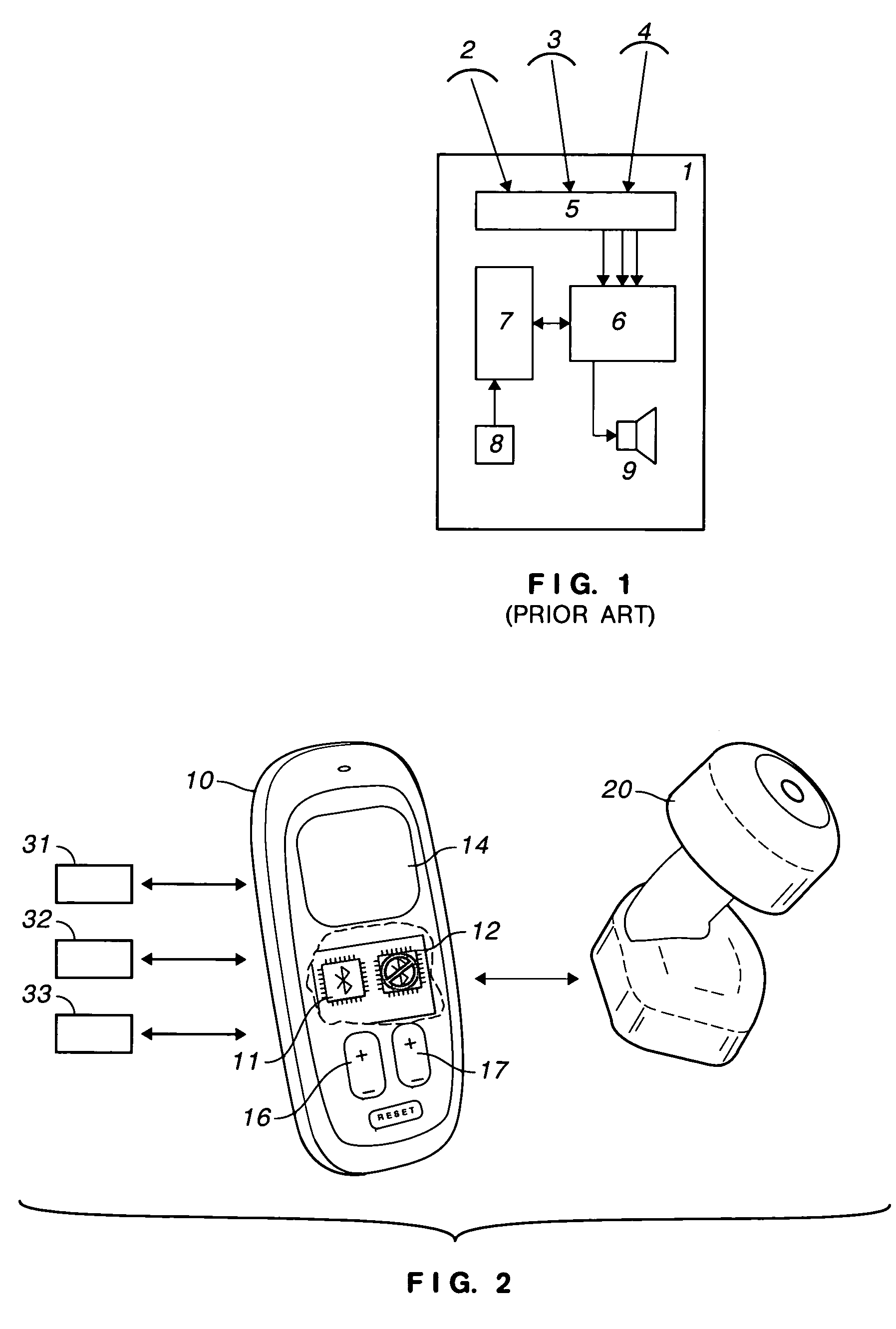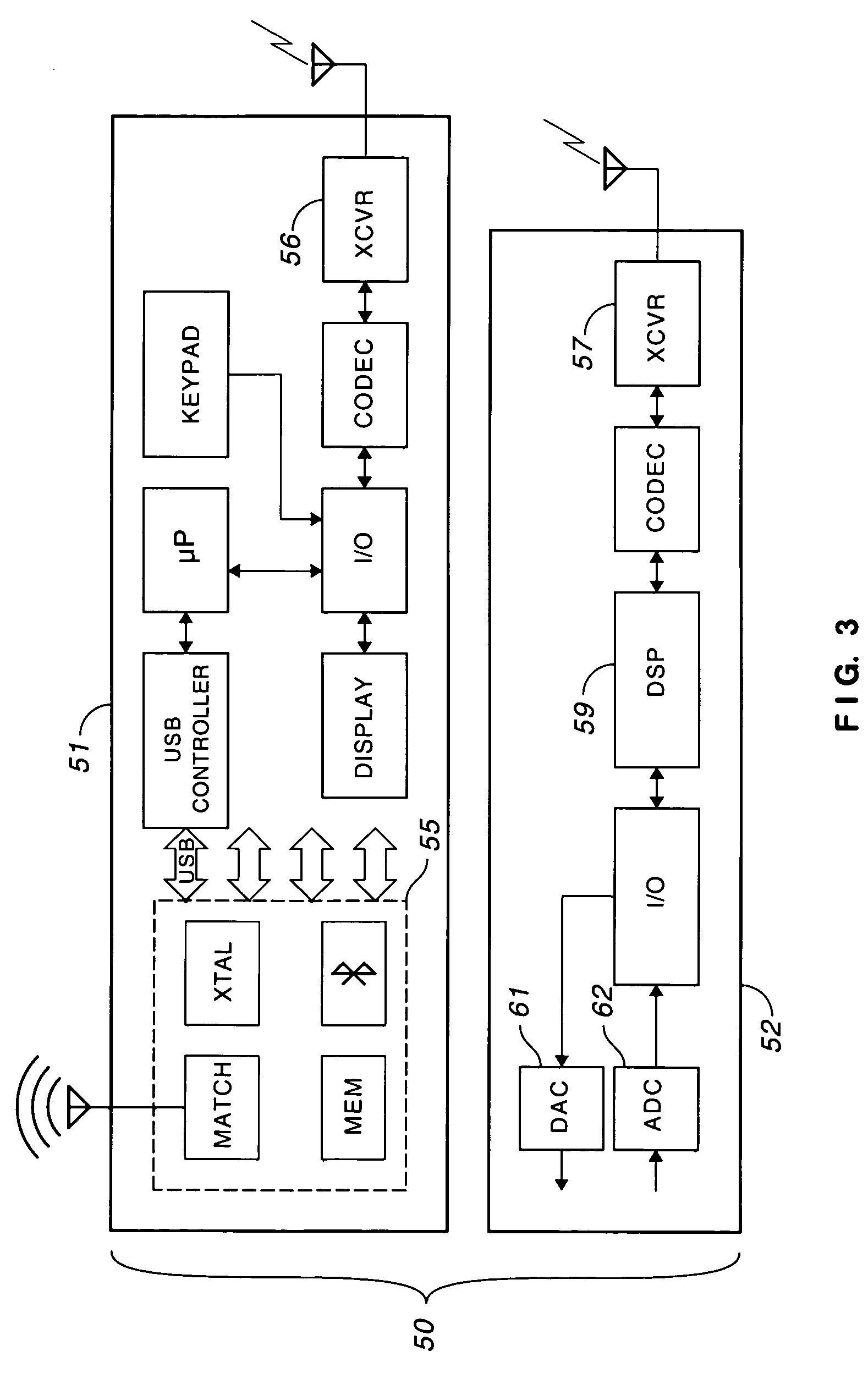Wireless gateway for hearing aid
a gateway and hearing aid technology, applied in the field of hearing aids, can solve the problems of limiting the amount of heat generated in the ear canal of a user without raising the temperature of the hearing aid to an uncomfortable level, and the constant problem of power dissipation, so as to achieve the effect of minimizing power dissipation and low power
- Summary
- Abstract
- Description
- Claims
- Application Information
AI Technical Summary
Benefits of technology
Problems solved by technology
Method used
Image
Examples
Embodiment Construction
[0015]The description of FIG. 1 is quoted from the '026 patent.
[0016]FIG. 1“shows a block diagram of a hearing aid 1 that receives radio signals from a plurality of transmitters or signal sources 2, 3, 4. A radio receiver, which preferably contains a bluetooth interface 5, registers all radio signals and forwards them to a converter 6.”
[0017]“The address of possible transmitters or signal sources 2, 3, 4 are stored in an address register or memory 7 and respectively provided with a priority. The addresses and / or priorities can be input into the hearing aid using an input unit 8.”
[0018]“Based on the priority from the address register 7, the converter 6 decides which of the signals sent from the signal sources 2, 3, 4 must be converted into an acoustic signal for an output unit 9 in the hearing aid 1. Over and above this, a manual selection of the signal source can be alternatively or additionally provided, for example via a push-button.”
[0019]In accordance with the invention, as illu...
PUM
 Login to View More
Login to View More Abstract
Description
Claims
Application Information
 Login to View More
Login to View More - R&D
- Intellectual Property
- Life Sciences
- Materials
- Tech Scout
- Unparalleled Data Quality
- Higher Quality Content
- 60% Fewer Hallucinations
Browse by: Latest US Patents, China's latest patents, Technical Efficacy Thesaurus, Application Domain, Technology Topic, Popular Technical Reports.
© 2025 PatSnap. All rights reserved.Legal|Privacy policy|Modern Slavery Act Transparency Statement|Sitemap|About US| Contact US: help@patsnap.com



